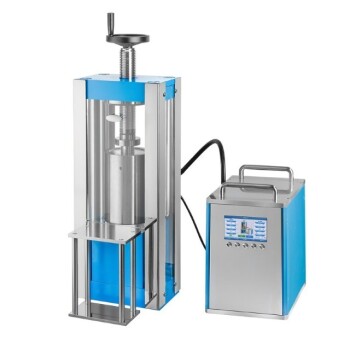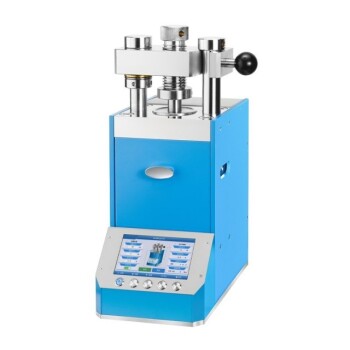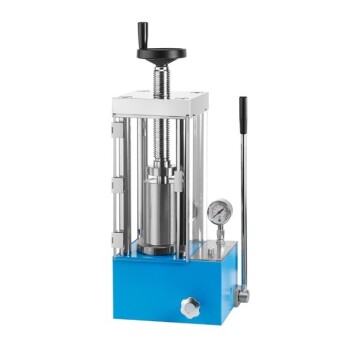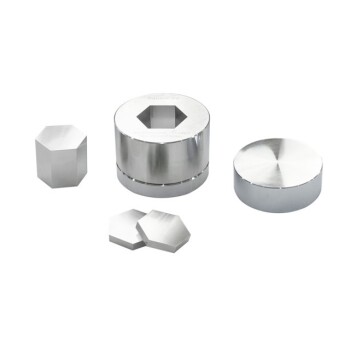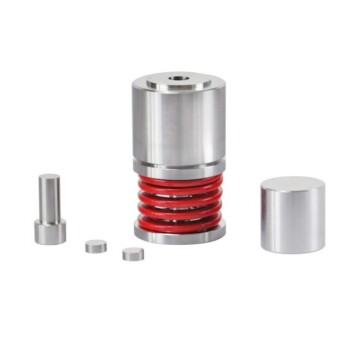In short, Cold Isostatic Presses (CIP) operate across a wide pressure spectrum, with standard production systems typically reaching up to 600 MPa (6,000 bar or 87,000 psi). While many applications use pressures well below this, high-performance systems can achieve levels exceeding 900 MPa (130,000 psi) for specialized materials.
The key takeaway is not a single maximum pressure, but the ability to precisely control pressure across a vast range. The ideal pressure is determined entirely by the material being processed and the target density required for the final component.
The Spectrum of CIP Pressures
Cold Isostatic Pressing is a versatile technology precisely because its operational pressures are not one-size-fits-all. The pressure required is a critical variable tailored to the specific powder material and the desired characteristics of the compacted part.
Standard Operational Pressures
For a large number of applications in powder metallurgy and technical ceramics, operational pressures typically range from 35 MPa to 400 MPa (5,000 to 60,000 psi).
This range is highly effective for consolidating most powders into a "green" compact with sufficient strength and uniform density for handling and subsequent sintering.
High-Pressure Applications
Many modern CIP systems are designed to operate up to 600 MPa (6,000 bar or ~87,000 psi).
This higher pressure is necessary for compacting high-performance materials, such as advanced ceramics, sputtering targets, or refractory metals. The goal is often to achieve the highest possible green density to minimize shrinkage and distortion during final sintering.
Ultra-High-Pressure Capabilities
Specialized and research-grade CIP units can push beyond standard limits, reaching pressures of 900 MPa (130,000 psi) or more.
These extreme pressures are used for developing novel materials, consolidating exceptionally hard-to-press powders, or achieving near-theoretical densities in the pre-sintered state for mission-critical components.
How Pressure Creates a Uniform Part
The pressure level is only part of the equation. The "isostatic" nature of the process—applying pressure equally from all directions—is what makes it so effective.
The Role of the Pressure Medium
A fluid, typically water, oil, or a glycol mixture, is used as the pressure-transmitting medium. This fluid envelops a sealed, flexible mold containing the powder.
As the fluid is pressurized, it exerts uniform force on every point of the mold's surface, eliminating the density gradients and internal stresses common in traditional uniaxial pressing.
The Goal: High Green Density
The primary purpose of applying this pressure is to force the powder particles into a dense, tightly packed arrangement.
Higher pressure generally results in a higher "green" density (the density of the part before sintering). This leads to a stronger, more handleable component and more predictable results in the final furnace firing stage.
Understanding the Trade-offs
While higher pressure can seem universally better, there are critical trade-offs to consider when selecting or specifying a CIP system.
Equipment Cost and Complexity
The relationship between pressure capability and cost is exponential. A vessel and pumping system rated for 600 MPa is significantly more robust, complex, and expensive than one rated for 200 MPa.
Cycle Time and Throughput
Achieving ultra-high pressures requires more time for the pressurization and depressurization cycles. For high-volume production, operating at the lowest effective pressure is crucial for maximizing throughput.
Material Response
Not all powders benefit from extreme pressure. Some brittle materials may experience particle crushing rather than simple rearrangement, which can be detrimental to the final microstructure of the component.
Making the Right Choice for Your Application
Selecting the appropriate pressure level is a balance between material requirements, component specifications, and economic realities.
- If your primary focus is standard ceramics or powder metals for industrial parts: A system with a range up to 200-300 MPa is often the most cost-effective and efficient solution.
- If your primary focus is achieving maximum density in high-performance materials: You will likely require pressures in the 400-600 MPa range to meet stringent density and performance specifications.
- If your primary focus is research on novel materials or niche applications: A system with ultra-high-pressure capability (above 600 MPa) provides the necessary flexibility to explore the limits of material consolidation.
Ultimately, selecting the right pressure is about matching the equipment's capability to the specific density and integrity requirements of your material.
Summary Table:
| Pressure Range | Typical Applications | Key Benefits |
|---|---|---|
| 35-400 MPa | Standard ceramics, powder metals | Uniform density, cost-effective |
| Up to 600 MPa | Advanced ceramics, sputtering targets | High green density, minimal shrinkage |
| Over 900 MPa | Novel materials, research | Near-theoretical densities, specialized uses |
Need precise pressure control for your lab? KINTEK specializes in lab press machines, including automatic lab presses, isostatic presses, and heated lab presses, designed to meet your specific material consolidation needs. Achieve superior density and efficiency in your processes—contact us today to discuss how our solutions can enhance your laboratory's performance!
Visual Guide
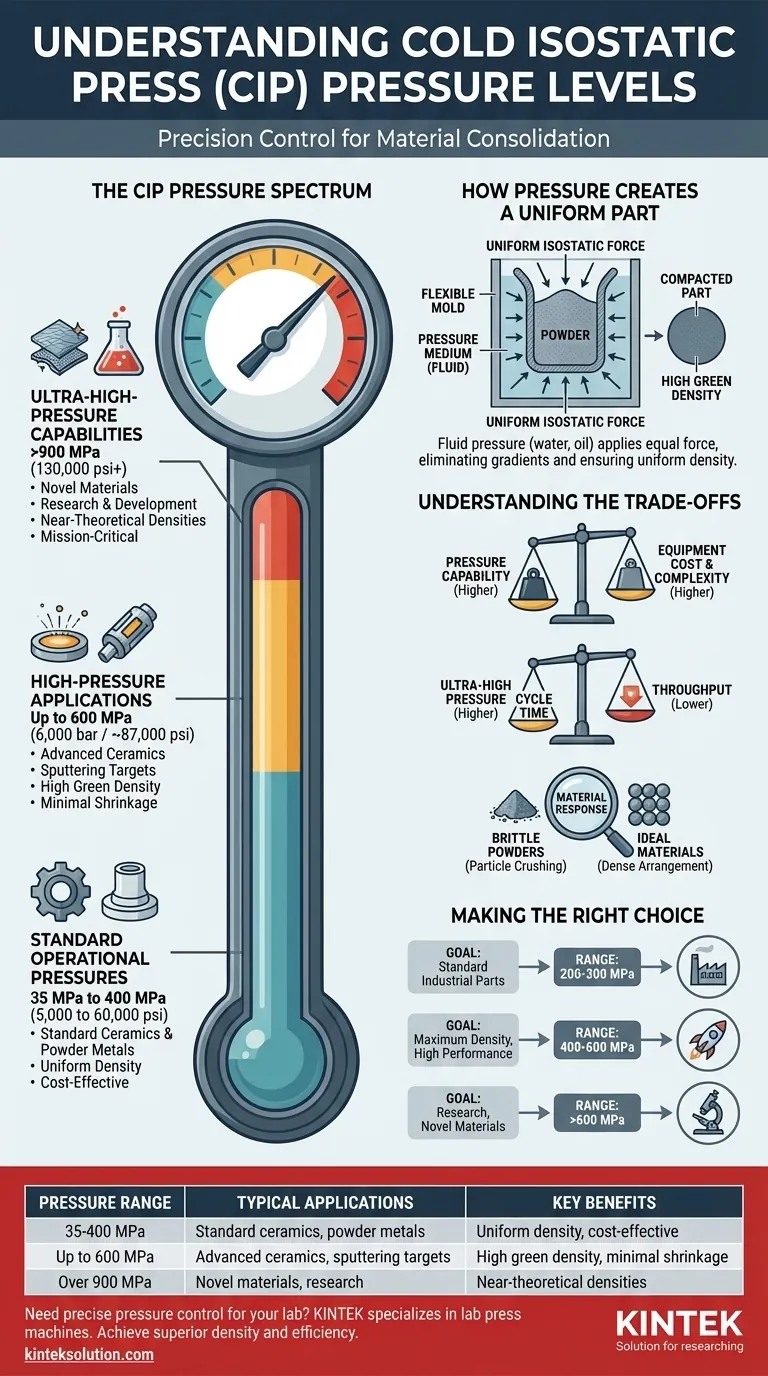
Related Products
- Electric Split Lab Cold Isostatic Pressing CIP Machine
- Automatic Lab Cold Isostatic Pressing CIP Machine
- Manual Cold Isostatic Pressing CIP Machine Pellet Press
- Automatic Laboratory Hydraulic Press Lab Pellet Press Machine
- Manual Laboratory Hydraulic Press Lab Pellet Press
People Also Ask
- What are the common forming processes in advanced ceramics? Optimize Your Manufacturing for Better Results
- How is cold isostatic pressing used in complex-shaped component production? Achieve Uniform Density for Intricate Parts
- What are the advantages of Cold Isostatic Pressing (CIP) for pellet preparation? Achieve Superior Density and Uniformity
- How does electrical Cold Isostatic Pressing (CIP) contribute to cost savings? Unlock Efficiency and Reduce Expenses
- What are the economic and environmental benefits of CIP? Boost Efficiency and Sustainability in Manufacturing
